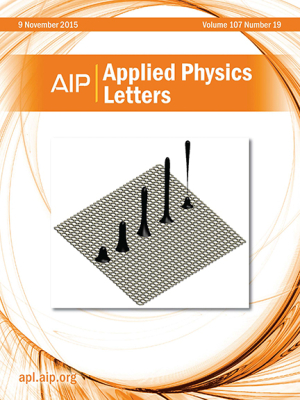Research on ferrofluids conducted by Hadi Ghasemi, assistant professor of mechanical engineering at the UH Cullen College of Engineering, and his NanoTherm Research Group published today on the cover of Applied Physics Letters.
“I’m delighted that our work was selected for the cover,” Ghasemi said. “I credit my doctoral students, Peyman Irajizad and Nazanin Farokhnia, for bringing competence, dedication and enthusiasm to our research project.”
Ferrofluids, which contain magnetic nanoparticles, are used in magnetic drug targeting, magnetic hyperthermia cancer treatment and magnetic resonance imaging contrast agents, among numerous other applications. Basically, a magnetic field can remotely manipulate ferrofluids noninvasively in human bodies and experimentally in laboratories. Small volumes of ferrofluids are necessary for most applications, but existing techniques for dispensing such amounts have limitations.
“Microfluidics and acoustic actuation are current approaches to generate small volumes, but they are complicated, and they cannot be implemented for all applications,” Ghasemi said. “So we need to generate a much simpler way to dispense ferrofluids.”
Ghasemi and his students developed a novel method for dispensing small volumes of ferrofluids by constraining flux with a porous membrane and an inhomogeneous magnetic field. They can dispense a wide range of ferrofluids in quantities ranging from nanoliters to picoliters in single or multiple droplets at different frequencies either continuously or intermittently. They can pause dispensation of the droplets by simply deactivating the magnetic field.
“By tuning the magnetic field and changing the type of membrane, we can change the volume of the ferrofluid dispensed,” Ghasemi said. “We can dispense one droplet, two droplets or one hundred droplets in one second.”
The group also developed a predictive mathematical model that accurately predicts the volume of the dispensed droplets, which provides potential to rational implementation of ferrofluids in a wide range of applications.
“Our goal is to elucidate fundamentals of thermal-fluid systems at nanoscales and pave the way for breakthroughs in smaller scale devices,” Ghasemi said.
